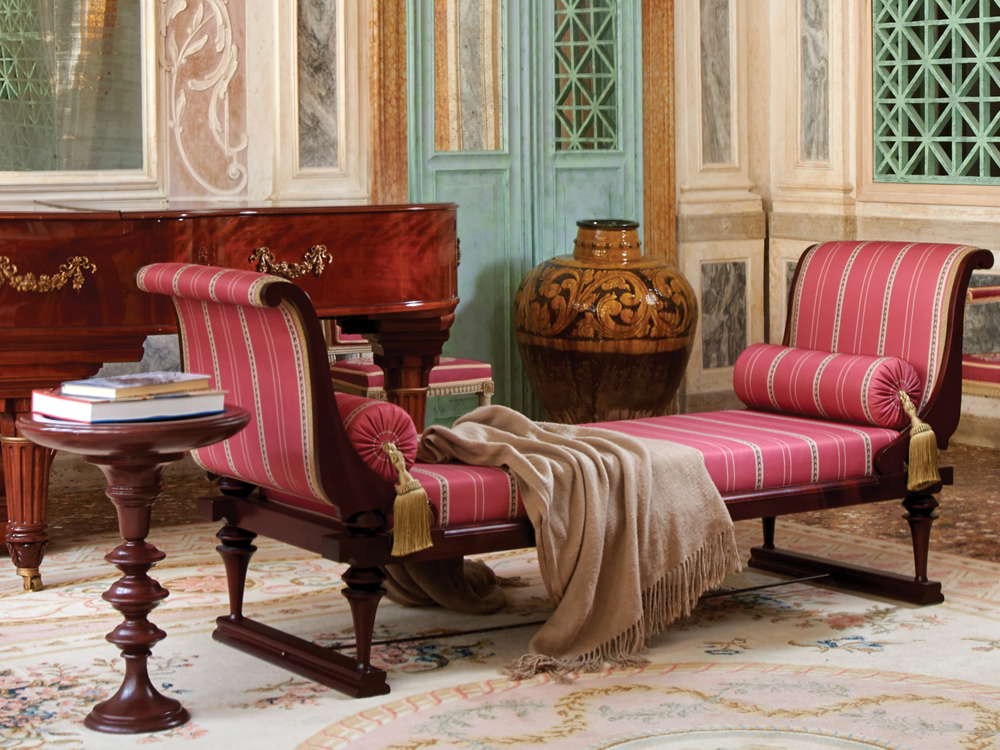
Chaise longue at Palazzo Grimani, Venice, Italy
Palazzo Grimani
Venice, Italy
"John Simpson’s role as a furniture designer places him in a tradition that begins with antiquity and stretches back to major architects who have also designed furniture in the classical style, from Giacomo Barozzi da Vignola in the 1560s at the Palazzo Farnese in Rome, to William Kent, Robert Adam, and James Wyatt, in the eighteen century, Percier and Fontaine in the nineteenth, and Sir Edwin Lutyens in the twentieth." (Professor David Watkin in his book “THE ARCHITECTURE OF JOHN SIMPSON, The Timeless Language of Classicism.” Rizzoli 2014)
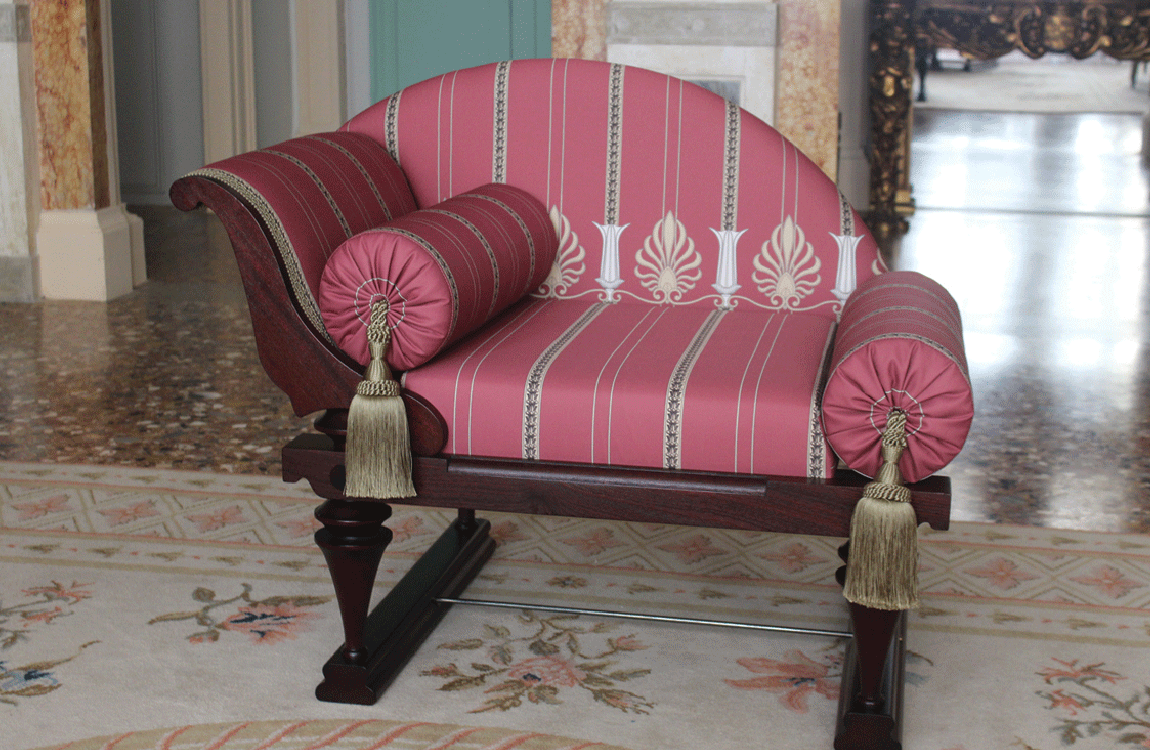
The Caesar chair at Palazzo Grimani, Venice, Italy
Palazzo Grimani
Venice, Italy
"John Simpson’s role as a furniture designer places him in a tradition that begins with antiquity and stretches back to major architects who have also designed furniture in the classical style, from Giacomo Barozzi da Vignola in the 1560s at the Palazzo Farnese in Rome, to William Kent, Robert Adam, and James Wyatt, in the eighteen century, Percier and Fontaine in the nineteenth, and Sir Edwin Lutyens in the twentieth." (Professor David Watkin in his book “THE ARCHITECTURE OF JOHN SIMPSON, The Timeless Language of Classicism.” Rizzoli 2014)
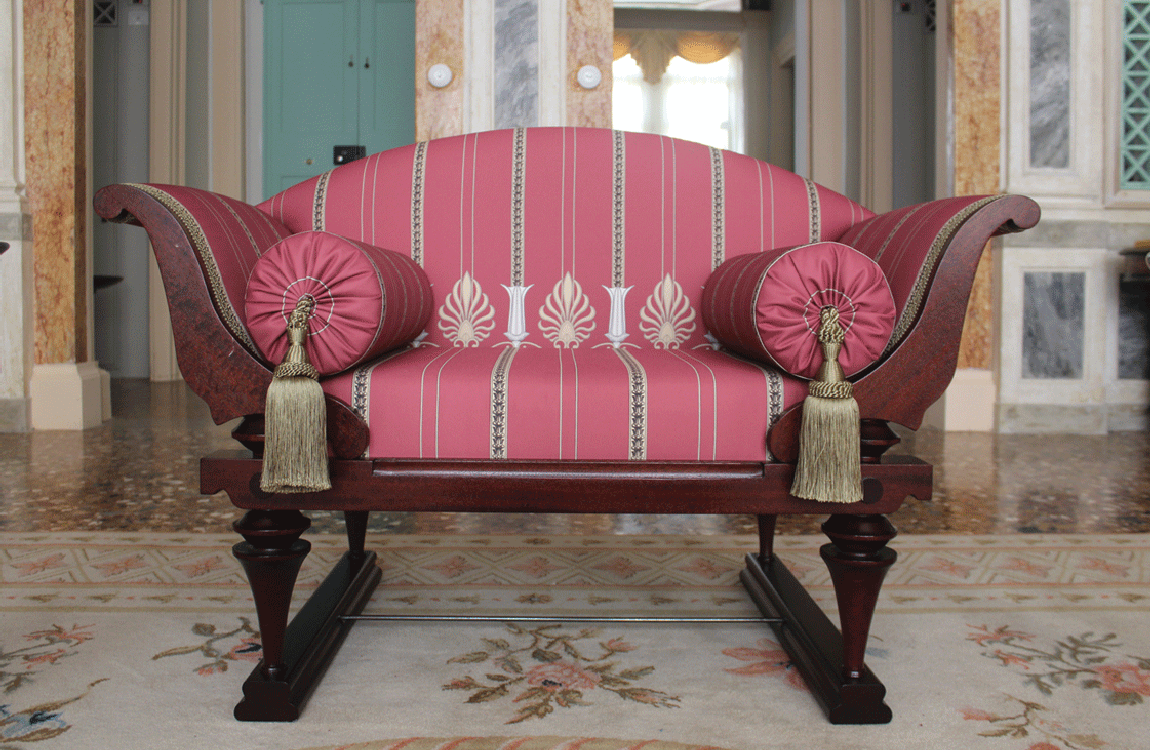
Armchair at Palazzo Grimani, Venice, Italy
Palazzo Grimani
Venice, Italy
"John Simpson’s role as a furniture designer places him in a tradition that begins with antiquity and stretches back to major architects who have also designed furniture in the classical style, from Giacomo Barozzi da Vignola in the 1560s at the Palazzo Farnese in Rome, to William Kent, Robert Adam, and James Wyatt, in the eighteen century, Percier and Fontaine in the nineteenth, and Sir Edwin Lutyens in the twentieth." (Professor David Watkin in his book “THE ARCHITECTURE OF JOHN SIMPSON, The Timeless Language of Classicism.” Rizzoli 2014)
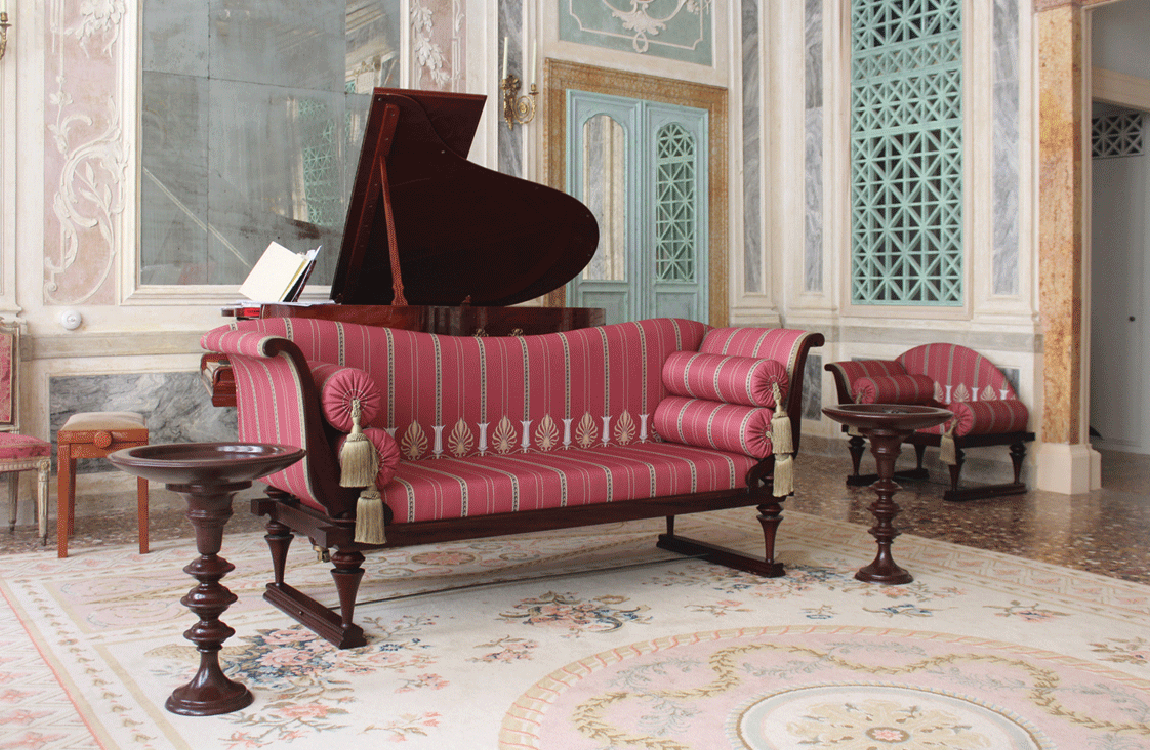
The design for the furniture for Palazzo Grimani was inspired by ancient Roman designs
Palazzo Grimani
Venice, Italy
"John Simpson’s role as a furniture designer places him in a tradition that begins with antiquity and stretches back to major architects who have also designed furniture in the classical style, from Giacomo Barozzi da Vignola in the 1560s at the Palazzo Farnese in Rome, to William Kent, Robert Adam, and James Wyatt, in the eighteen century, Percier and Fontaine in the nineteenth, and Sir Edwin Lutyens in the twentieth." (Professor David Watkin in his book “THE ARCHITECTURE OF JOHN SIMPSON, The Timeless Language of Classicism.” Rizzoli 2014)
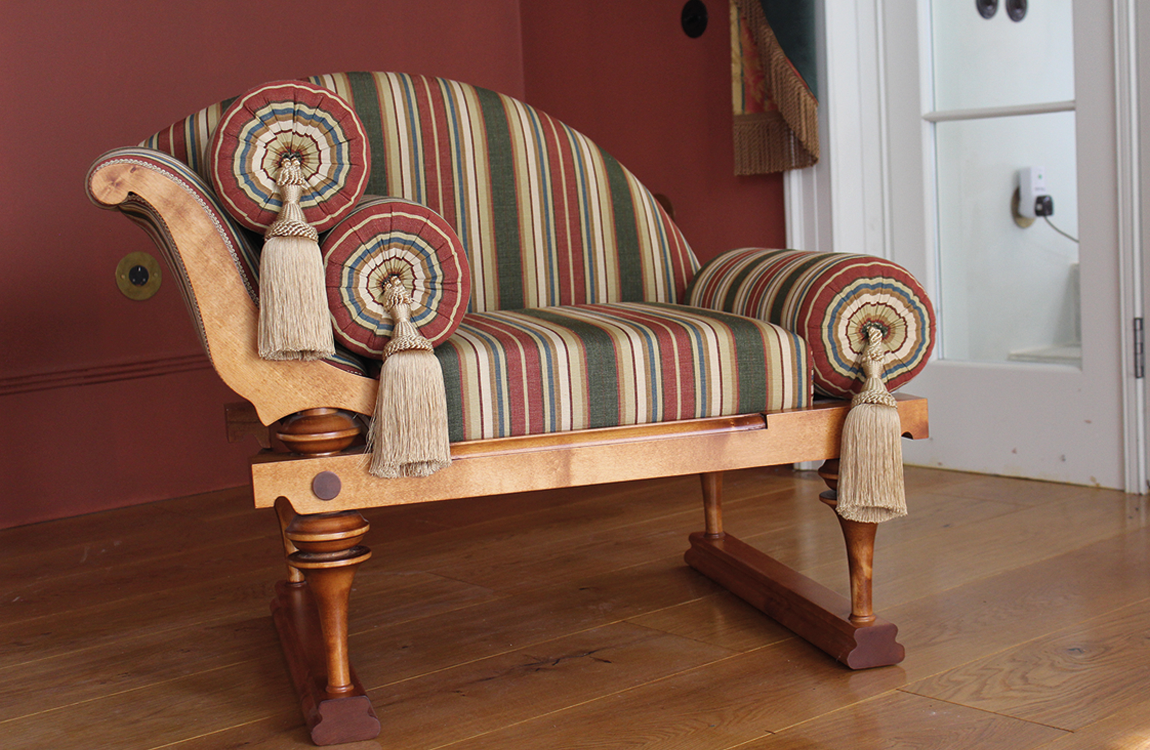
The Caesar chair at Harewell Hall, Wherwell, United Kingdom
Harewell Hall
Wherwell, UK
"John Simpson’s role as a furniture designer places him in a tradition that begins with antiquity and stretches back to major architects who have also designed furniture in the classical style, from Giacomo Barozzi da Vignola in the 1560s at the Palazzo Farnese in Rome, to William Kent, Robert Adam, and James Wyatt, in the eighteen century, Percier and Fontaine in the nineteenth, and Sir Edwin Lutyens in the twentieth." (Professor David Watkin in his book “THE ARCHITECTURE OF JOHN SIMPSON, The Timeless Language of Classicism.” Rizzoli 2014)
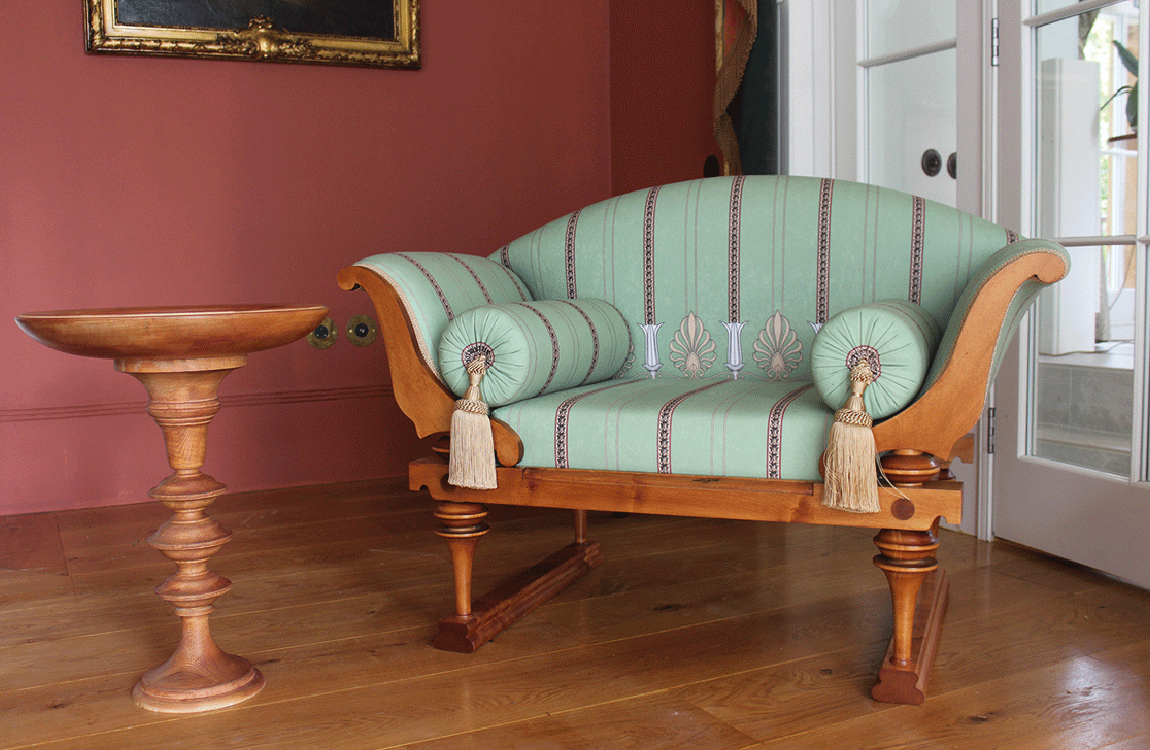
Armchair at Harewell Hall, Wherwell, United Kingdom
Harewell Hall
Wherwell, UK
"John Simpson’s role as a furniture designer places him in a tradition that begins with antiquity and stretches back to major architects who have also designed furniture in the classical style, from Giacomo Barozzi da Vignola in the 1560s at the Palazzo Farnese in Rome, to William Kent, Robert Adam, and James Wyatt, in the eighteen century, Percier and Fontaine in the nineteenth, and Sir Edwin Lutyens in the twentieth." (Professor David Watkin in his book “THE ARCHITECTURE OF JOHN SIMPSON, The Timeless Language of Classicism.” Rizzoli 2014)
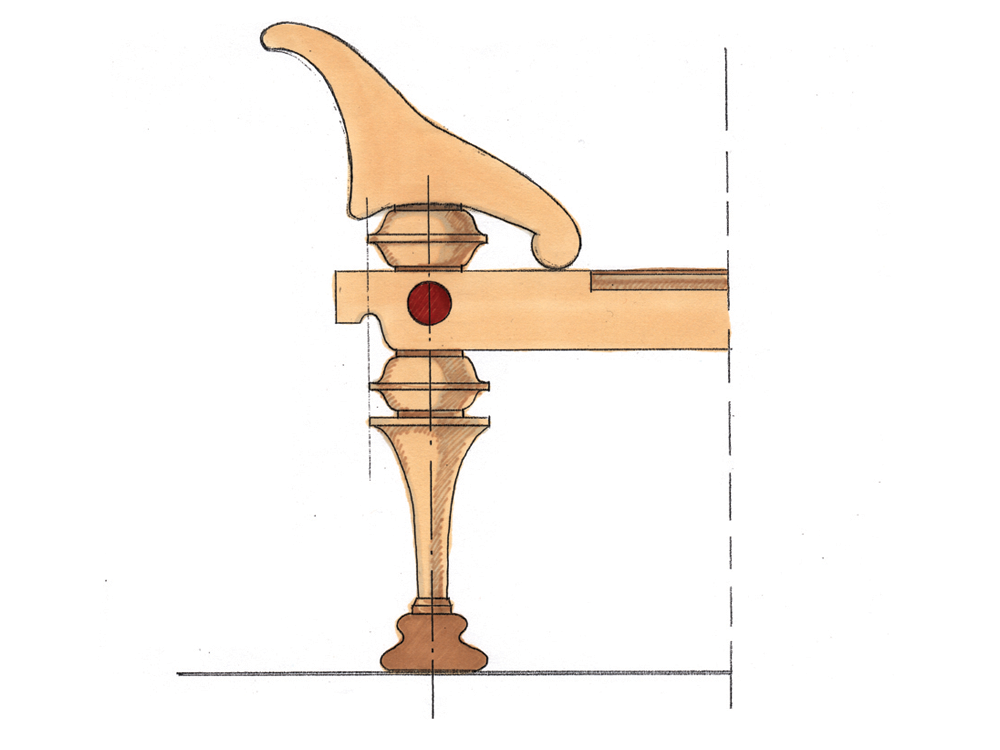
Sketch for new furniture for Palazzo Grimani, Venice, Italy
Palazzo Grimani
Venice, Italy
"John Simpson’s role as a furniture designer places him in a tradition that begins with antiquity and stretches back to major architects who have also designed furniture in the classical style, from Giacomo Barozzi da Vignola in the 1560s at the Palazzo Farnese in Rome, to William Kent, Robert Adam, and James Wyatt, in the eighteen century, Percier and Fontaine in the nineteenth, and Sir Edwin Lutyens in the twentieth." (Professor David Watkin in his book “THE ARCHITECTURE OF JOHN SIMPSON, The Timeless Language of Classicism.” Rizzoli 2014)
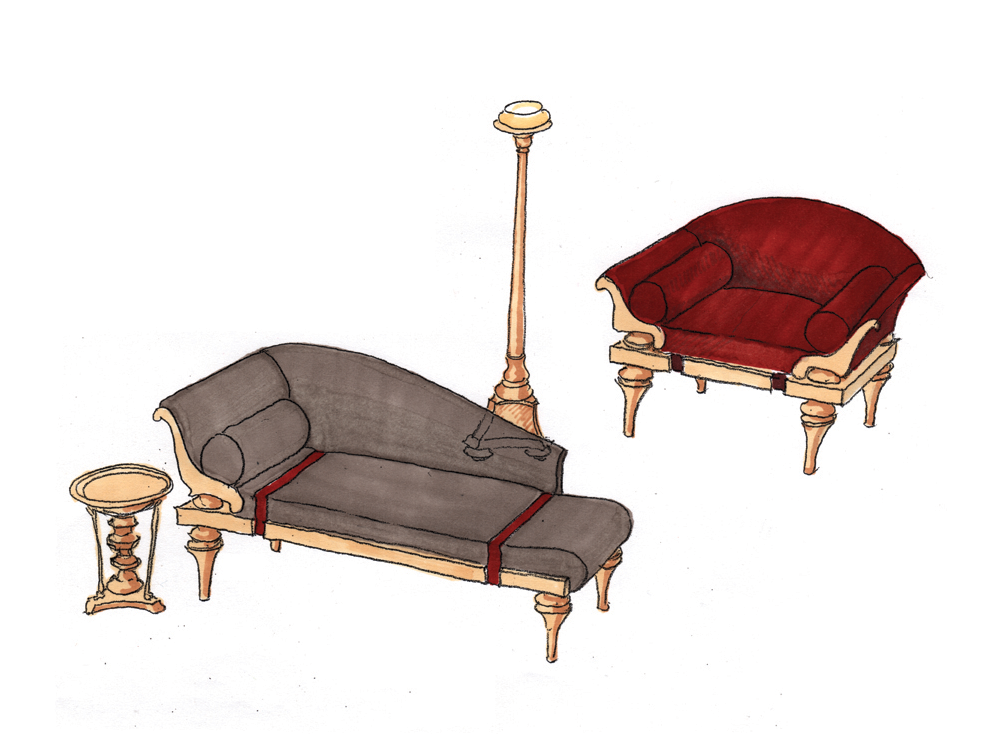
Sketches for new furniture for Palazzo Grimani, Venice, Italy
Palazzo Grimani
Venice, Italy
"John Simpson’s role as a furniture designer places him in a tradition that begins with antiquity and stretches back to major architects who have also designed furniture in the classical style, from Giacomo Barozzi da Vignola in the 1560s at the Palazzo Farnese in Rome, to William Kent, Robert Adam, and James Wyatt, in the eighteen century, Percier and Fontaine in the nineteenth, and Sir Edwin Lutyens in the twentieth." (Professor David Watkin in his book “THE ARCHITECTURE OF JOHN SIMPSON, The Timeless Language of Classicism.” Rizzoli 2014)
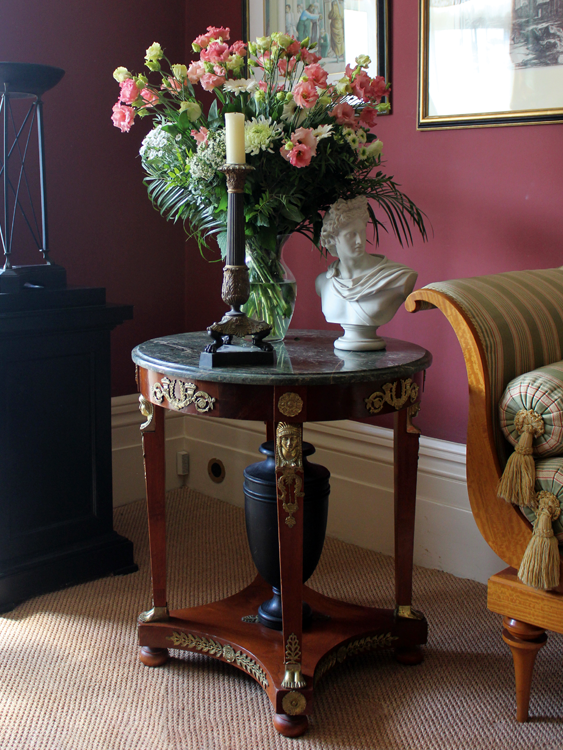
Table at Belsize Park, London, United Kingdom
Belsize Park
London, UK
"John Simpson’s role as a furniture designer places him in a tradition that begins with antiquity and stretches back to major architects who have also designed furniture in the classical style, from Giacomo Barozzi da Vignola in the 1560s at the Palazzo Farnese in Rome, to William Kent, Robert Adam, and James Wyatt, in the eighteen century, Percier and Fontaine in the nineteenth, and Sir Edwin Lutyens in the twentieth." (Professor David Watkin in his book “THE ARCHITECTURE OF JOHN SIMPSON, The Timeless Language of Classicism.” Rizzoli 2014)